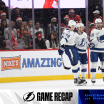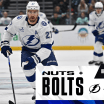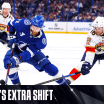On February 4, the Tampa Bay Lightning occupied last place in the Eastern Conference standings.
A popular pick in the preseason to win the Stanley Cup, the Lightning came out of the All-Star break as a playoff afterthought with over two months to go.
Yet, entering the final week of the regular season, the Bolts had climbed all the way back into the playoff hunt and were putting serious pressure on the Toronto Maple Leafs, Boston Bruins and Ottawa Senators, all three teams ultimately winning just enough down the stretch to hold off the pesky Lightning.
Andrei Vasilevskiy appears ready for the next step
Lightning goalie Andrei Vasilevskiy posted a .930 save percentage over the final month and a half of the season

© Scott Audette


















